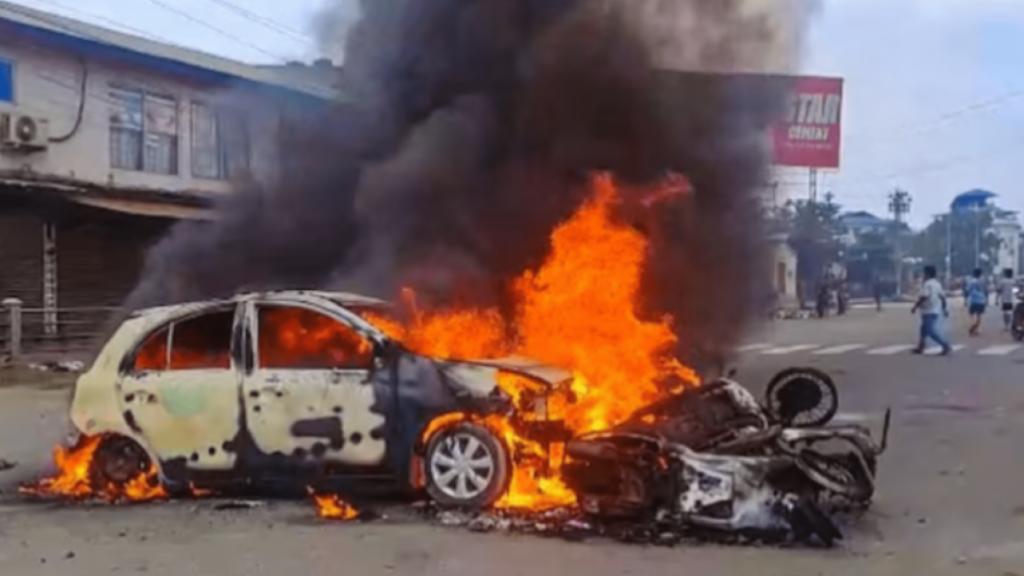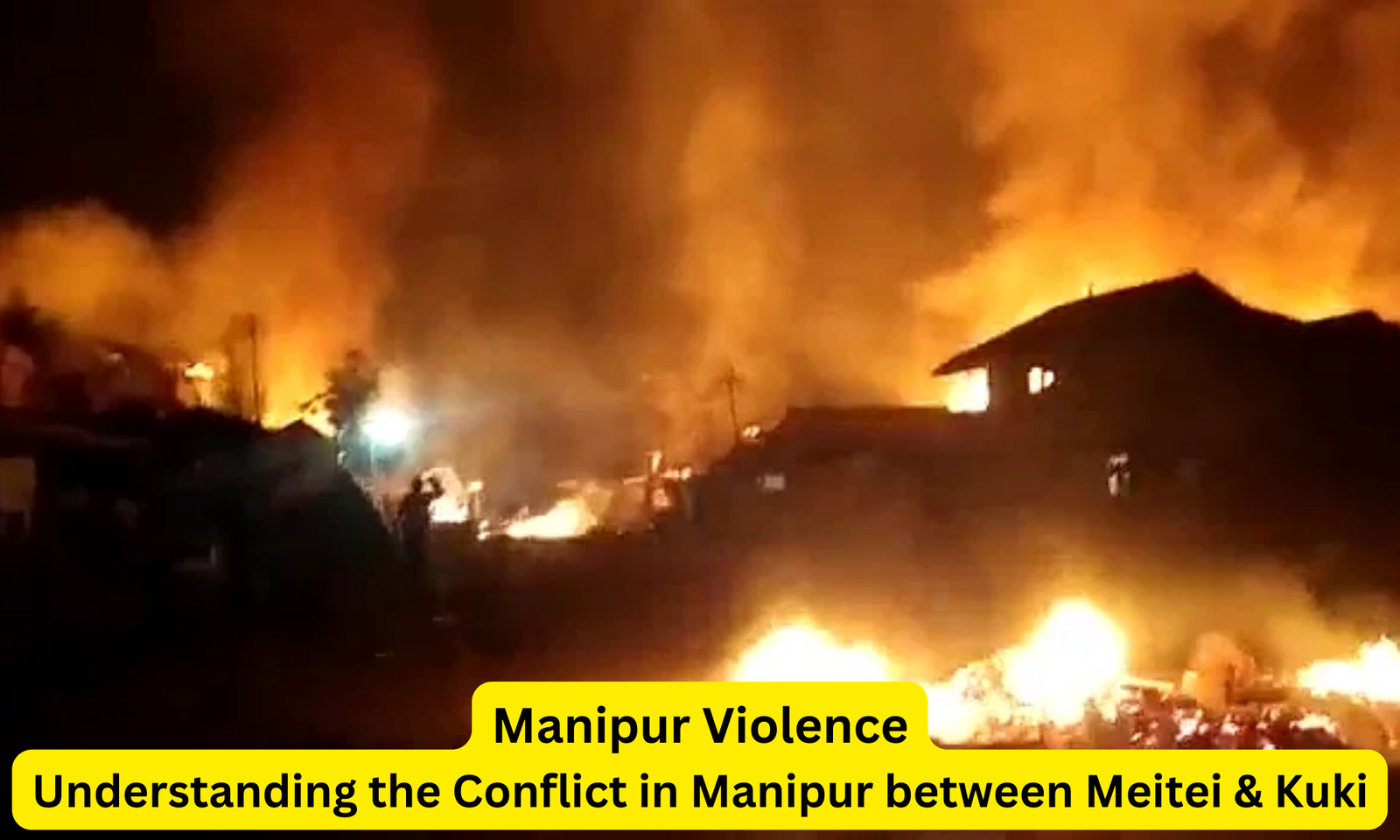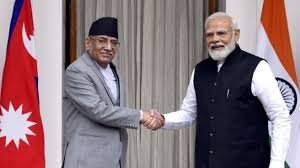Conflict in Manipur : Struggle for Public
Manipur, a small north-eastern state in India, has been in the news recently due to the escalation of violence in the region. The conflict in Manipur is not new and has been ongoing for several decades. In this article, we will provide an overview of the conflict, its historical context, and its implications for students preparing for government exams.

Why this News is Important
The conflict in Manipur has significant implications for students preparing for government exams, particularly those preparing for civil service positions like PSCS to IAS. Understanding the history and current situation of the region is crucial for aspirants, as it provides them with a better understanding of the socio-political situation of the state, which is an important topic in the exams.
Historical Context
Manipur, located in the north-eastern region of India, is home to several ethnic communities, including the Meiteis, Nagas, Kukis, and Pangals. The conflict in Manipur has its roots in the demand for greater autonomy and the recognition of the distinct identity of these ethnic communities.
The issue of autonomy and identity became prominent in the 1960s when the Government of India recognized Manipur as a full-fledged state. This move was opposed by some sections of the population who felt that the state was not adequately represented in the Indian Union. This led to the formation of several armed groups in the region, who began demanding greater autonomy for their communities.
Since then, the conflict in Manipur has been ongoing, with frequent clashes between the armed groups and the Indian security forces. The conflict has resulted in significant human rights violations and has had a significant impact on the development and progress of the region.
5 Key Takeaways from “Understanding the Conflict in Manipur”
| Serial Number | Key Takeaway |
|---|---|
| 1. | The conflict in Manipur is rooted in the demand for greater autonomy and the recognition of the distinct identity of the ethnic communities in the region. |
| 2. | The conflict has resulted in significant human rights violations and has had a significant impact on the development and progress of the region. |
| 3. | Understanding the history and current situation of Manipur is crucial for students preparing for government exams, particularly those preparing for civil service positions. |
| 4. | The conflict in Manipur is an important topic in government exams and is often asked in the form of objective or descriptive questions. |
| 5. | Aspirants should focus on understanding the socio-political situation of Manipur and the initiatives taken by the government to address the issue of autonomy and identity. |
In conclusion, the conflict in Manipur is a complex issue that has significant implications for the region and the country as a whole. Students preparing for government exams must have a thorough understanding of the conflict and its historical context to answer questions related to the topic.
Important FAQs for Students from this News
Q1. What is the conflict in Manipur about?
Ans: The conflict in Manipur is rooted in the demand for greater autonomy and the recognition of the distinct identity of the ethnic communities in the region.
Q2. When did the conflict in Manipur begin?
Ans: The conflict in Manipur has been ongoing for several decades, with its roots in the demand for greater autonomy and recognition of the distinct identity of the ethnic communities.
Q3. What are the implications of the conflict in Manipur for students preparing for government exams?
Ans: Understanding the history and current situation of Manipur is crucial for students preparing for government exams, particularly those preparing for civil service positions like PSCS to IAS.
Q4. What is the importance of understanding the historical context of the conflict in Manipur?
Ans: Understanding the historical context of the conflict in Manipur provides aspirants with a better understanding of the socio-political situation of the state, which is an important topic in the exams.
Q5. What are the key takeaways from the article “Understanding the Conflict in Manipur”?
Ans: The key takeaways from the article are: the conflict is rooted in the demand for greater autonomy and recognition of the distinct identity of the ethnic communities, it has resulted in significant human rights violations, understanding the situation in Manipur is crucial for aspirants preparing for government exams, the conflict is an important topic in government exams, and aspirants should focus on understanding the socio-political situation of Manipur and the initiatives taken by the government to address the issue.
Some Important Current Affairs Links


















 Exciting News!
Exciting News!  Join Our Telegram Channel Now!
Join Our Telegram Channel Now!
 Join our Telegram channel for a thrilling adventure into the world of daily current affairs.
Join our Telegram channel for a thrilling adventure into the world of daily current affairs. 
 Don’t miss out on the latest updates and insights! Click to join now and be part of the knowledge revolution!
Don’t miss out on the latest updates and insights! Click to join now and be part of the knowledge revolution! 
